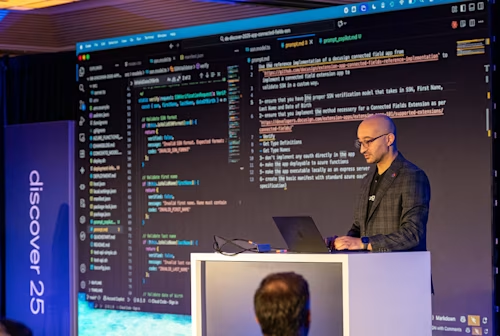
Docusign eSignature Integration 101: Setting the foundation
It can be hard to know where to start your Docusign integration development process. We begin a new blog series to get you past that block and on your way to your first integration.

Integrating Docusign into your application can streamline and automate agreement processes, enhancing your product with powerful eSignature capabilities. Whether you’re building a document management tool, an agreement platform, or any app that requires digital signatures, a well-planned integration can make all the difference.
Welcome to the first post in our blog series, where you’ll embark on a journey to integrate Docusign with a generic application. This series will guide you step-by-step through the integration process.
In this introductory post, I’ll focus on setting up the groundwork. This includes creating a Docusign developer account and cloning a sample app that you’ll use as the foundation for your integration. By the end of this post, you’ll have a basic app ready to be extended with Docusign functionalities in subsequent posts.
What to expect at the end
At the conclusion of this series, you’ll have a fully integrated application with the following capabilities:
Use JWT to set up login with Docusign credentials.
Upload documents and prepare them for eSignature.
Send documents for signature and track their status.
View all sent documents with real-time status updates.
Use other Docusign functionalities
But first, you’ll lay the foundation by creating the basic app.
What you will need
To follow along with this series, make sure you have the following:
Docusign developer account: Sign up at the Docusign Developer Center.
Node.js and npm: Install the latest version from Node.js.
Git: For cloning the repository and version control.
Basic knowledge of JavaScript and REST APIs.
Basic app: Cloning and running the sample app
The sample app provides a starting point for your integration. Let’s get it up and running:
Steps to set up the app
Run the following commands in Git Bash or your preferred command-line environment. Before you start, navigate to the folder where you want to install the app.
Clone the sample repository:
git clonehttps://github.com/docusign/Blog-Tenant-App.git
Navigate to the project directory:
cd Blog-Tenant-AppNavigate to the client folder:
cd clientInstall dependencies using the npm package manager:
npm install
Navigate to the server folder:
cd ../serverInstall dependencies
npm install
Run the development server:
npm run dev
Open your browser and navigate to http://localhost:3000 to view the app.

The sample app includes a basic dashboard with placeholders for future functionalities. In subsequent posts, we’ll enhance this app by adding Docusign integration step-by-step.
Looking forward
Congratulations on setting up the basic app! You’ve now established the starting point for integrating Docusign with a generic application. The sample app will serve as the canvas for implementing Docusign features.
In the next post, you’ll discover how to integrate the Docusign authentication flow, enabling secure user logins. Stay tuned for more!
Explore the code: You can find the complete code for this project on GitHub: Sample App for Docusign Integration.
Additional resources

Abhi Singh started with Docusign in January 2024. He brings systems engineering and consulting skills to his role, and a passion for problem-solving that addresses real customer issues.
Related posts
Docusign IAM is the agreement platform your business needs





